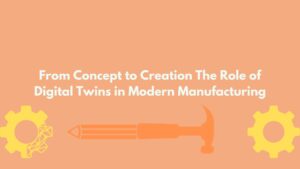Introduction
The manufacturing industry is undergoing a significant transformation driven by technological advancements and innovative practices. These innovations are essential for driving efficiency and productivity, allowing manufacturers to stay competitive in a rapidly changing market. This blog explores the key innovations that are shaping the future of manufacturing.
Automation and Robotics
Automation and robotics are at the forefront of manufacturing innovation. By automating repetitive tasks, manufacturers can achieve higher precision, speed, and efficiency.
Key Benefits:
- Increased Productivity: Automated systems can operate continuously without breaks, significantly increasing output.
- Enhanced Quality: Automation reduces the likelihood of human error, leading to higher-quality products.
- Cost Savings: Over time, automation reduces labor costs and minimizes waste.
Additive Manufacturing (3D Printing)
Additive manufacturing, commonly known as 3D printing, is revolutionizing the way products are designed and produced. This technology allows for the creation of complex and customized components with high precision.
Applications:
- Prototyping: Rapidly create prototypes to test and refine designs.
- Customization: Produce customized products tailored to specific customer needs.
- Sustainable Production: Reduce material waste by using only the necessary amount of material.
Internet of Things (IoT)
The Internet of Things (IoT) is transforming manufacturing by connecting machines, systems, and devices. IoT enables real-time monitoring and data collection, leading to smarter decision-making and improved efficiency.
Key Features:
- Predictive Maintenance: Use data analytics to predict and prevent equipment failures, reducing downtime.
- Real-Time Monitoring: Monitor production processes in real-time to ensure optimal performance.
- Supply Chain Optimization: Enhance visibility and coordination across the supply chain.
Artificial Intelligence and Machine Learning
Artificial intelligence (AI) and machine learning (ML) are driving innovation in manufacturing by enabling advanced data analysis and automation.
Applications:
- Quality Control: Use AI to inspect products and identify defects with high accuracy.
- Process Optimization: Analyze production data to identify inefficiencies and optimize processes.
- Demand Forecasting: Predict customer demand and adjust production schedules accordingly.
Conclusion
Innovations in manufacturing are driving efficiency and productivity, allowing manufacturers to stay competitive in a rapidly changing market. By embracing automation, additive manufacturing, IoT, and AI, manufacturers can enhance their operations and deliver higher-quality products. The future of manufacturing is bright for those who are willing to innovate and adapt to new technologies and practices.









